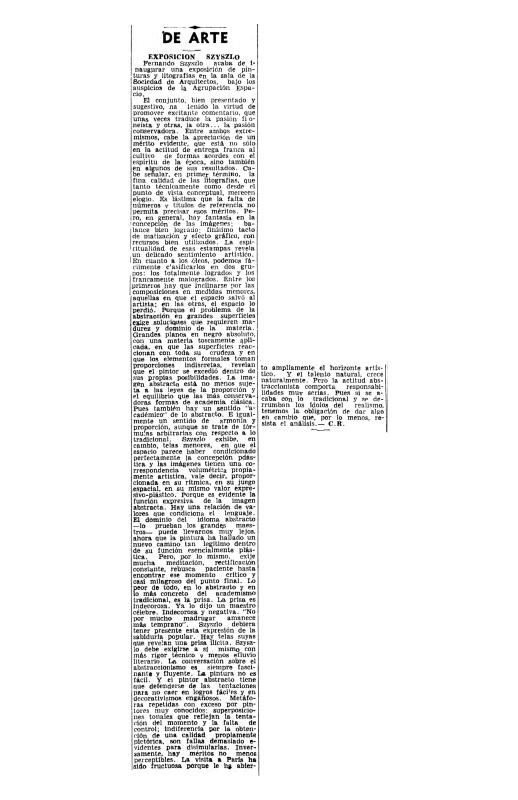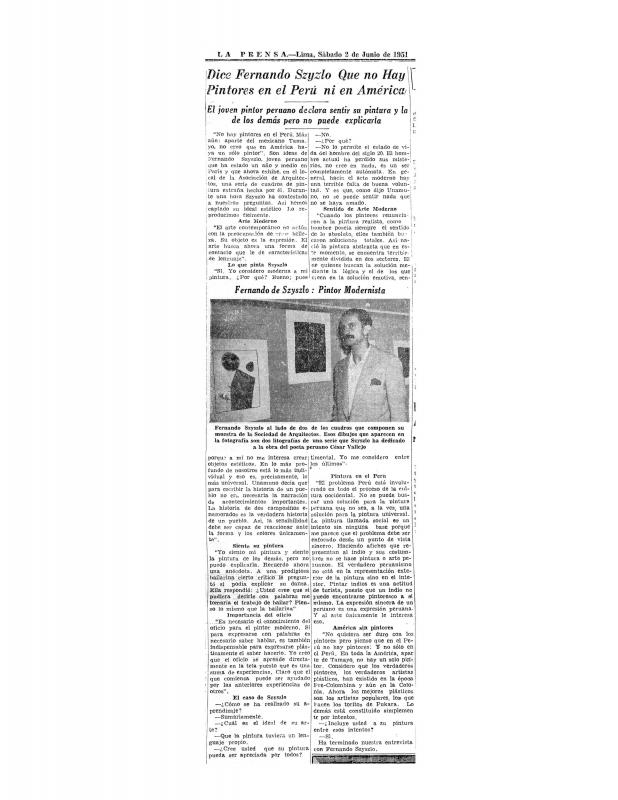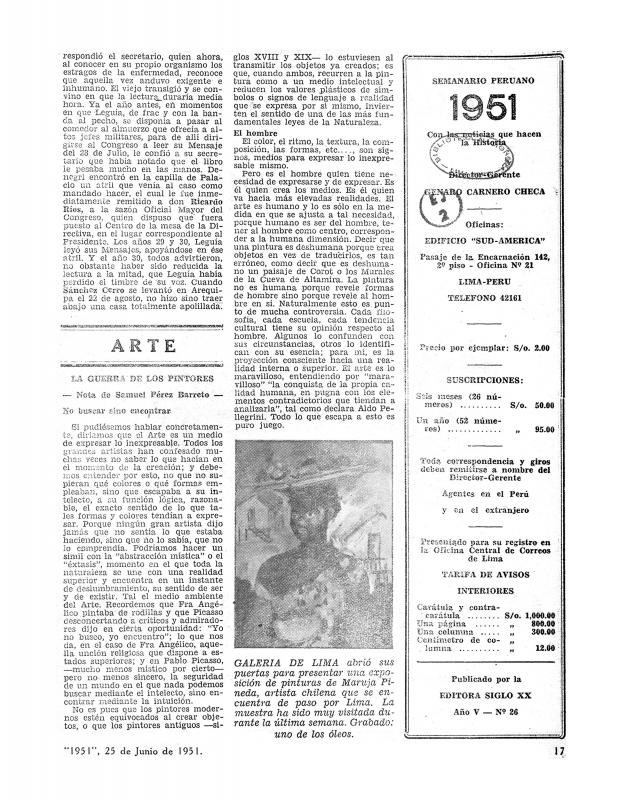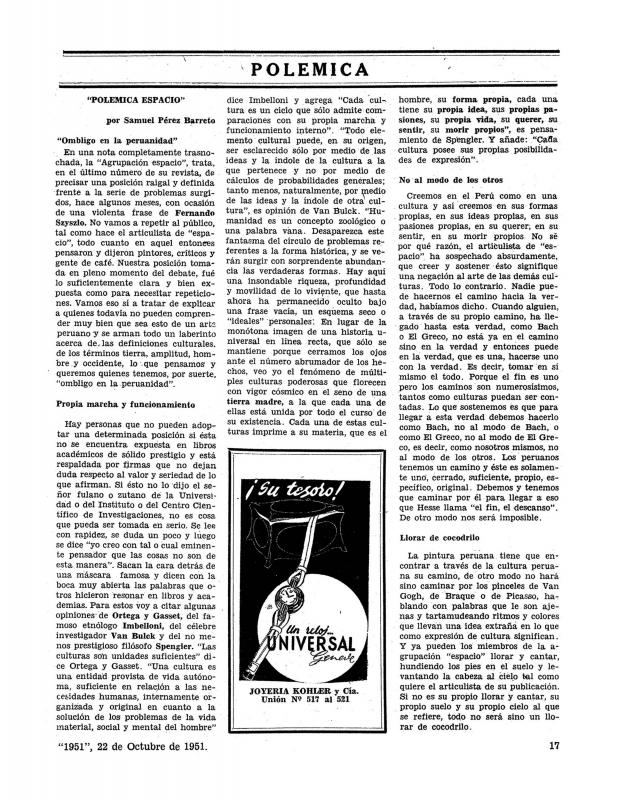This text is Juan Ríos’s third contribution to the debate that took shape around painter Fernando de Szyszlo’s polemic statement (“there are no painters in Peru”) published in Lima-based newspaper La Prensa (Lima, June 2, 1951) on the occasion of his show of abstract paintings at the Sociedad de Arquitectos del Perú. Significantly, the article was illustrated with a reproduction of Pablo Picasso’s painting Massacre in Kores.
In early 1951, Peruvian painter Fernando de Szyszlo (b. 1925) returned to Lima after having spent almost two years in Paris. His time in the French capital proved decisive to a turn towards Abstract Expressionism in his work, largely due to the influence of German artist Hans Hartung (1904–89). In May 1951, de Szyszlo exhibited his most recent works at the Sociedad de Arquitectos in Lima, in a show held under the auspices of the Agrupación Espacio, a group that spearheaded innovation in art and architecture in the country.
De Szyszlo’s show was, generally speaking, favorably reviewed, though influential Peruvian critic Carlos Raygada (1898–1953) did have some reservations (see “De arte: exposición Szyszlo” (doc. no. 1150738)). The belligerent tone of de Szyszlo’s rebuttal was overshadowed by his now-famous statement in La Prensa newspaper: “there are no painters in Peru” (doc. no. 1137793). His open contempt for contemporary art from his country gave rise to an irate reaction from Peruvian artists and intellectuals and earned him a leading role in the first debate in Peru on non-figurative art. The statement addressed the lack of local points of reference for any artist interested in participating in the most recent international trends. The debate shed light on the terms that would define local modern art, evidencing differences among Peruvian progressive intellectuals. By defending “earthly abstraction” as the sole option for Peruvian art, critic Samuel Pérez Barreto (1921–2003) found himself up against fellow former members of the Agrupación Espacio, a group that vehemently rejected any partisan view that reduced the national to “the Andean.”
On this polemic, see Samuel Pérez Barreto’s “La guerra de los pintores” (ICAA digital archive doc. no. 1137856) and Juan Ríos’s “Polémica: ‘polémica Espacio’” (doc. no. 1137916).




